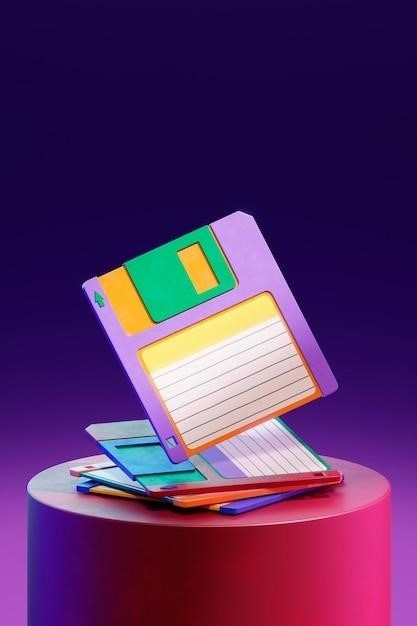Why Convert PDF to AI?
Converting PDF to AI offers significant advantages. PDFs are often read-only‚ limiting editing capabilities. AI‚ however‚ provides a fully editable vector format ideal for modifying graphics and text within design software‚ enhancing flexibility and precision for various applications.
Benefits of Using AI Format
The Adobe Illustrator (AI) format offers several key advantages over the PDF format‚ particularly when it comes to editing and manipulation of visual content. AI files are vector-based‚ meaning images are composed of mathematical equations rather than pixels. This ensures scalability without loss of quality; you can enlarge an AI image indefinitely without encountering pixelation or blurriness. This characteristic is crucial for high-resolution printing and large-format applications. Unlike PDFs‚ which often rasterize images upon conversion‚ AI files maintain their crispness and detail. Furthermore‚ the AI format supports layers‚ allowing for precise control over individual elements within a design. This layered structure simplifies complex edits‚ enabling users to modify specific parts of an image without affecting others. The flexibility of AI files makes them ideal for projects requiring frequent modifications and revisions‚ providing a superior workflow compared to the limitations of a PDF.
Limitations of PDF for Editing
While PDFs excel at document preservation and sharing‚ their inherent limitations hinder extensive editing. PDFs are primarily designed for read-only access; modifying text or images often results in quality degradation. Unlike vector formats‚ PDFs frequently embed rasterized images‚ which are pixel-based. Enlarging these images leads to pixelation and loss of sharpness. Precise editing of individual elements within a complex PDF can be challenging‚ lacking the layered structure found in vector formats like AI. Modifying text often requires specialized software and can lead to inconsistencies in font rendering or spacing. Moreover‚ the process of editing PDFs can be time-consuming and cumbersome‚ particularly for documents with many images or intricate layouts. These limitations underscore the need for conversion to a more flexible format like AI when significant edits or manipulations are required.
Choosing a PDF to AI Converter
Selecting the right PDF to AI converter hinges on several factors⁚ consider ease of use‚ batch processing capabilities‚ file size limitations‚ and the availability of additional features like image editing options. Prioritize user reviews and security features.
Online Converters vs. Software
The choice between online PDF to AI converters and dedicated software applications depends on your specific needs and priorities. Online converters offer immediate accessibility and often require no installation‚ making them convenient for occasional use and users with limited technical expertise. Many online tools handle single or batch conversions with a user-friendly interface‚ often requiring only file uploads and downloads. However‚ online converters may have limitations on file size‚ processing speed‚ and advanced features. They might also raise privacy concerns regarding the handling of your documents.
Conversely‚ dedicated software applications often provide more comprehensive features‚ superior performance for large files‚ and greater control over the conversion process. Software solutions may include additional editing capabilities‚ enabling fine-tuning before conversion. They are often better suited to users who frequently convert PDF to AI files and require robust‚ reliable tools. However‚ these applications typically necessitate installation‚ potentially consuming system resources and requiring a financial investment.
Features to Consider in a Converter
When selecting a PDF to AI converter‚ several key features warrant careful consideration. File size limitations are crucial; ensure the converter can handle the size of your PDFs. Batch processing capability is highly beneficial for efficient conversion of multiple files simultaneously. Accuracy in preserving vector graphics and text formatting is paramount; some converters might compromise quality. The availability of options for image editing‚ such as resizing or applying filters‚ enhances the tool’s versatility. Consider the converter’s support for various PDF versions and its ability to maintain layers and other structural elements within the converted AI file. The ease of use of the interface is important for a positive user experience.
Furthermore‚ explore the converter’s speed and efficiency. A fast conversion time saves valuable time‚ especially when dealing with numerous files. Check if the converter offers a preview function to review the converted AI file before downloading‚ enabling early detection of potential issues. Finally‚ consider whether the converter is free or paid and if any usage limitations exist. Security features and data privacy policies should also be assessed to ensure the safety of your documents.

Using Online PDF to AI Converters
Online converters offer a convenient way to transform PDF files into AI format. Simply upload your PDF‚ initiate the conversion‚ and download the resulting AI file. Many offer batch processing for multiple files.
Uploading and Converting Files
The process of uploading and converting PDF files to AI format using online converters is generally straightforward. Most platforms provide a user-friendly interface with a clear “Upload” button. You can either select a PDF file from your computer’s file system or drag and drop the file directly onto the designated area on the website. Some converters also support pasting files that have been previously copied to your clipboard. After uploading‚ the conversion process typically begins automatically. The time it takes for the conversion to complete varies depending on factors such as the file size and complexity of the PDF document; smaller‚ simpler files will usually convert much faster than larger‚ more intricate ones. A progress bar or indicator often displays the conversion status‚ allowing you to monitor the process. Once the conversion is finished‚ you’ll typically see a prompt to download your newly converted AI file. This downloaded file can then be opened and edited using Adobe Illustrator or other compatible vector graphics software.
Batch Conversion Capabilities
Many online PDF to AI converters offer a valuable batch processing feature‚ significantly increasing efficiency when dealing with numerous files. This functionality allows you to upload and convert multiple PDF documents simultaneously‚ saving considerable time and effort compared to converting each file individually. The specific method for batch conversion may vary slightly depending on the platform. Some converters may have a dedicated “Batch Convert” button or option‚ while others might allow you to select multiple files at once during the standard upload process. The maximum number of files that can be processed in a single batch often varies between converters‚ with some supporting up to 25 files or even more‚ while others may have lower limits. Once the batch upload is complete‚ the converter will process all the selected files sequentially. You will usually receive a notification or be able to download a compressed archive containing all the resulting AI files once the entire batch conversion is finished. This batch processing capability is especially beneficial for users who regularly need to convert large volumes of PDF documents to the AI format.
Download Options
After the conversion from PDF to AI is complete‚ various download options are typically provided by online converters. These options aim to provide users with flexibility and convenience in accessing their converted files. The most common option is a direct download link‚ allowing users to save the AI file directly to their computer. Often‚ a “Download” button or link is prominently displayed once the conversion process is finished. Some converters provide a choice of download formats; for instance‚ you might be able to download a single AI file or a zipped archive if multiple files were converted in a batch. Download speeds can vary depending on the file size‚ your internet connection‚ and the server load on the converter’s platform. Additionally‚ some services might offer cloud storage integration‚ allowing you to save the converted AI file directly to your preferred cloud storage account (like Google Drive or Dropbox). It’s important to note that download links might have an expiration time‚ so it’s advisable to download the files promptly after conversion. Always double-check the file name and type before downloading to ensure you are receiving the expected AI file.

Advanced Features of Some Converters
Some advanced converters offer image editing options‚ allowing for adjustments like resizing‚ rotation‚ and filtering. They may also support a wider range of file sizes and formats‚ enhancing versatility and user experience.
Image Editing Options
Many online PDF to AI converters offer a range of image editing options directly within their interface‚ enhancing the conversion process and providing greater control over the final output. These features are particularly beneficial when dealing with PDFs containing complex or high-resolution images. Common image editing options include resizing‚ allowing users to scale images up or down to meet specific requirements. Rotation functionality enables the adjustment of image orientation‚ correcting any skewed or improperly aligned visuals. Furthermore‚ some converters include the ability to apply filters‚ such as grayscale‚ which can be useful for simplifying images or creating a specific aesthetic. These filters can transform color images into monochrome versions‚ or even invert colors for unique effects. The availability of these options directly within the conversion tool streamlines the workflow‚ eliminating the need for separate image editing software and saving valuable time and effort. In addition to these basic adjustments‚ some more advanced converters might offer more sophisticated options‚ such as color correction tools or the ability to remove backgrounds.
File Size and Format Support
A crucial factor when choosing a PDF to AI converter is its support for various file sizes and formats. Converters often specify maximum file size limits‚ which can vary significantly between different online tools and software applications. Larger PDFs containing extensive graphics or high-resolution images might exceed the limitations of some free converters‚ requiring users to opt for paid services or employ alternative methods for processing oversized files. Understanding these limitations beforehand is essential to avoid delays or conversion failures. Beyond file size‚ the ability to handle different PDF variations is also important. Some converters might struggle with PDFs that include complex layouts‚ embedded fonts‚ or specific encryption methods. Additionally‚ the output format needs consideration. While the primary goal is AI (Adobe Illustrator) conversion‚ some converters might also offer the option to save in other vector formats like SVG or EPS‚ offering greater flexibility depending on your design software and workflow preferences. Checking the supported file types ensures seamless integration into your existing design pipeline.



